
Fundamentals
The journey of textured hair, particularly within Black and mixed-race communities, is a profound narrative, deeply rooted in history, identity, and the very fibers of being. To speak of Black Hair Sustainability is to gently unspool a concept far richer than mere environmental consideration. This foundational understanding invites us into a holistic vision, one where the vitality of coils and curls intertwines with the health of the individual, the resilience of culture, and the well-being of our shared planet. It is a harmonious balance, a thoughtful approach to hair care that seeks enduring flourishing.
At its simplest, this idea encompasses the practices and philosophies that ensure the long-term health and vibrancy of Black and textured hair, while simultaneously honoring its profound cultural significance and minimizing adverse impacts on the environment. It is a gentle hand guiding us toward choices that serve not only our strands today but also the generations yet to come, preserving both the physical integrity of hair and the spirit it embodies. Understanding its meaning opens pathways to more mindful engagement with our crowns.

The Living Heritage of Hair
Hair in African and diasporic cultures has always been more than a simple adornment; it serves as a powerful medium of communication and a sacred repository of identity. Ancient traditions viewed hair as a spiritual antenna, a conduit to the divine, and a reflection of one’s social standing, marital status, or even a particular life stage. The meticulous styling practices, from intricate braids to sculptural twists, were not merely aesthetic pursuits; they were acts of storytelling, transmitting ancestral knowledge and communal values across generations. This historical depth imbues every discussion of Black Hair Sustainability with a spiritual dimension, reminding us that care for these strands is a continuation of a cherished legacy.
Black Hair Sustainability gently unspools a holistic vision where the vitality of coils and curls intertwines with individual health, cultural resilience, and planetary well-being.
Considering the heritage, the term’s explanation extends to safeguarding these traditions and the autonomy of Black individuals to express themselves through their hair without prejudice. It involves advocating for spaces where natural textures are celebrated, not tolerated, and where the wisdom of historical hair care is revered. This aspect of its significance emphasizes the importance of cultural preservation within the broader sustainability framework.
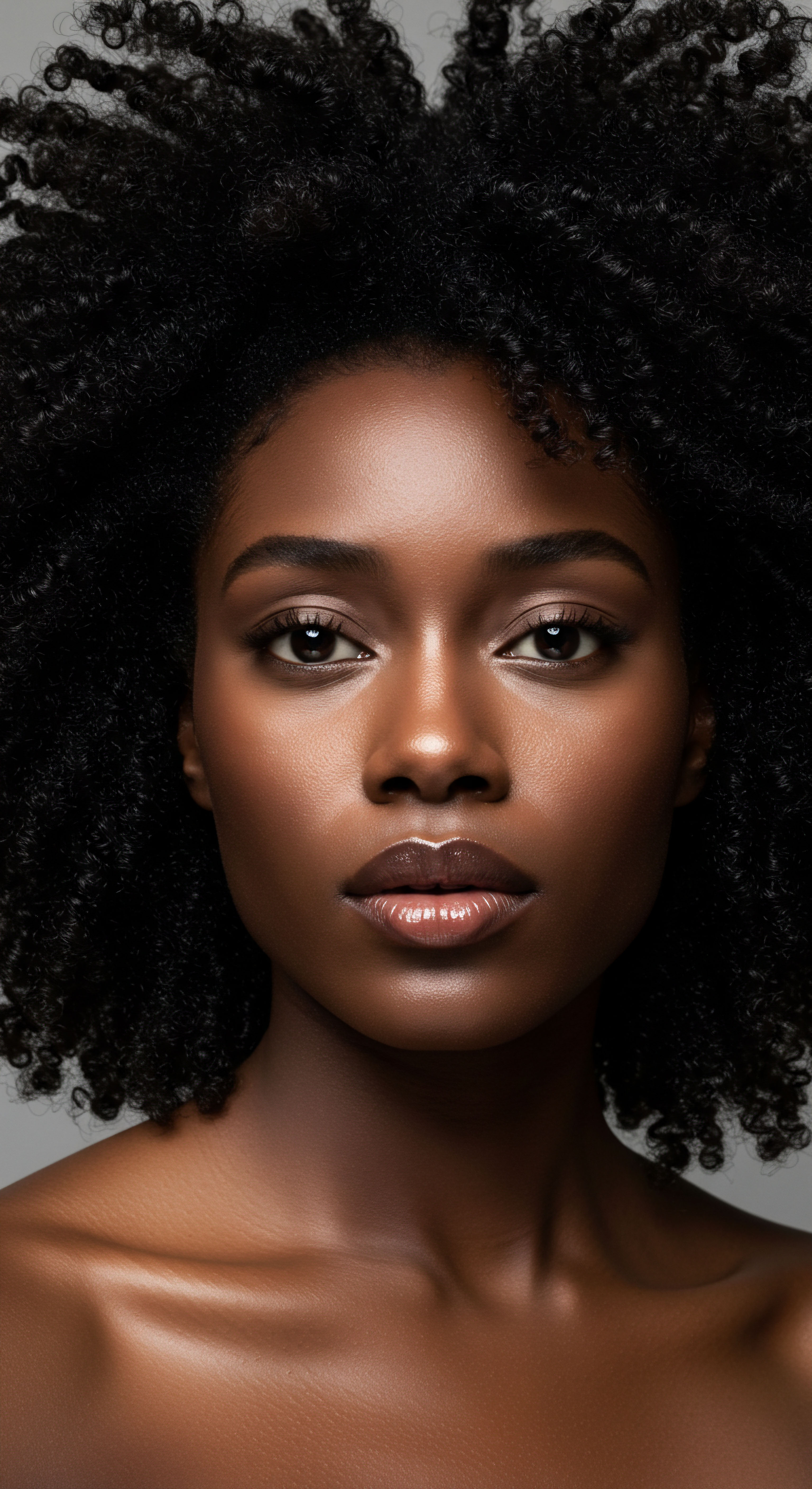
Gentle Care, Lasting Health
For textured hair, genuine sustainability begins with understanding its unique structural needs. Coils and curls, by their very nature, are more prone to dryness and breakage due to their elliptical shape and fewer cuticle layers that lay flat. Therefore, sustainable care prioritizes practices that hydrate, protect, and minimize manipulation, fostering an environment where hair can truly thrive. This includes thoughtful cleansing, conditioning, and styling routines that respect the hair’s delicate balance.
- Moisture Retention ❉ Selecting products that deeply hydrate and seal moisture within the hair shaft, rather than merely coating the surface.
- Protective Styling ❉ Employing styles like braids, twists, or buns that shield delicate ends from environmental stressors and reduce daily manipulation.
- Mindful Detangling ❉ Using wide-tooth combs or fingers with ample slip to gently release tangles, preventing unnecessary breakage.
- Scalp Health ❉ Recognizing the scalp as the foundation of healthy hair growth, using gentle cleansers and nourishing treatments.

Conscious Choices, Kind to Earth
The ecological aspect of Black Hair Sustainability calls for an awareness of the products we use and their journey from creation to disposal. It prompts a shift towards ingredients that are responsibly sourced, biodegradable, and non-toxic, safeguarding both our bodies and the Earth. This involves scrutinizing labels, seeking transparency from brands, and supporting those committed to ethical manufacturing and minimal waste.
Moving towards this awareness, we consider the packaging that encases our beloved elixirs and balms. Opting for refillable containers, recycled materials, or products with reduced plastic footprints becomes a small yet impactful act of stewardship. Every decision, from the contents of a jar to the material of its lid, contributes to a larger ecological picture.
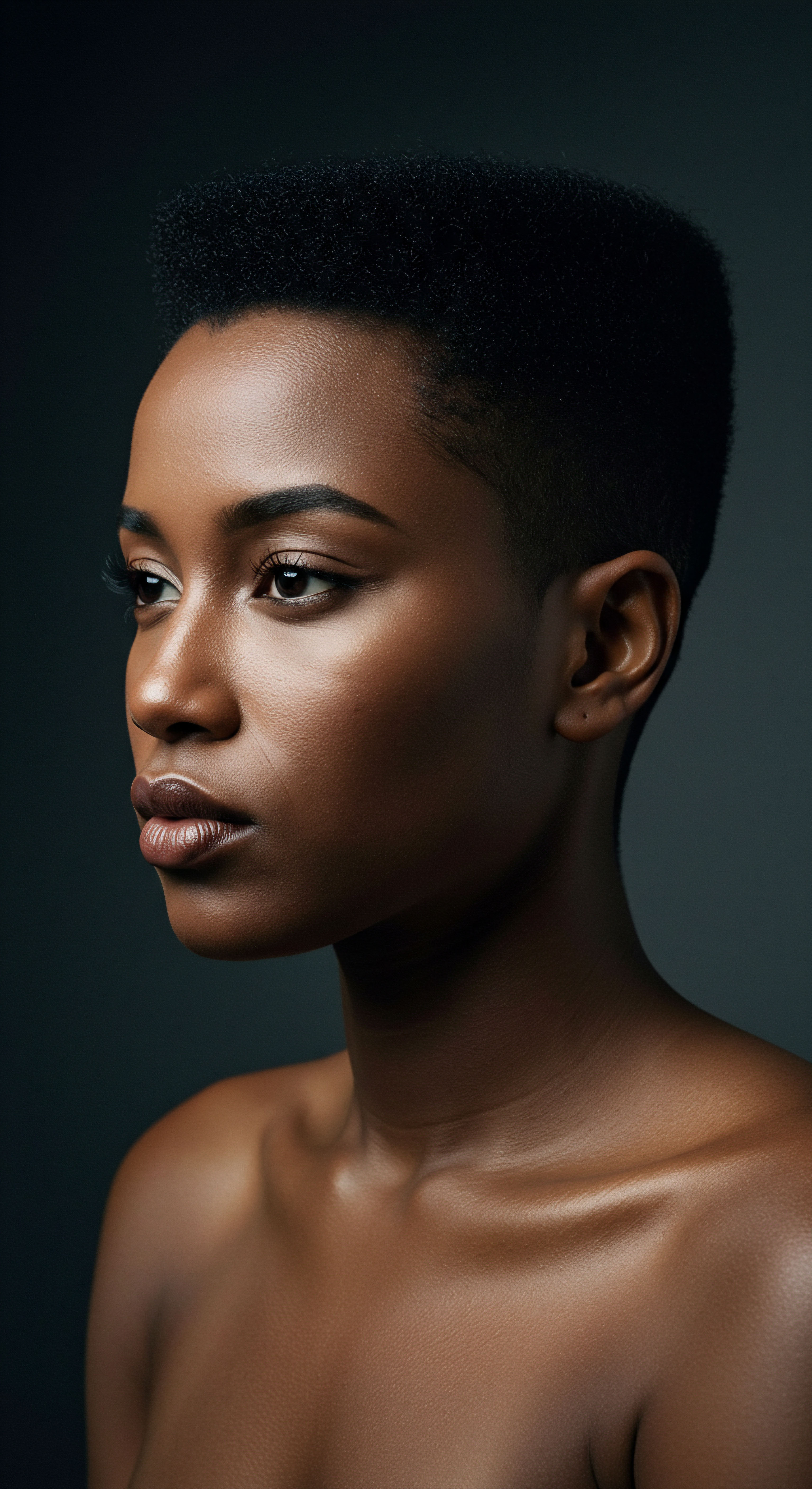
Intermediate
Moving beyond the foundational understanding, the intermediate meaning of Black Hair Sustainability deepens our exploration into its practical manifestations within daily life and the broader industry. This perspective acknowledges that sustainable hair care is not a static ideal but a dynamic, ongoing process, shaped by informed choices and a commitment to both personal well-being and collective responsibility. Its interpretation at this level involves a more granular examination of product efficacy, routine optimization, and the economic currents that influence access to ethical care.
The clarification of this concept extends to understanding how historical and contemporary socio-economic factors impact access to genuinely sustainable options within the textured hair community. It recognizes that the pursuit of hair health is often intertwined with overcoming systemic barriers, making conscious consumerism a powerful, albeit sometimes challenging, act of self-preservation and community upliftment.
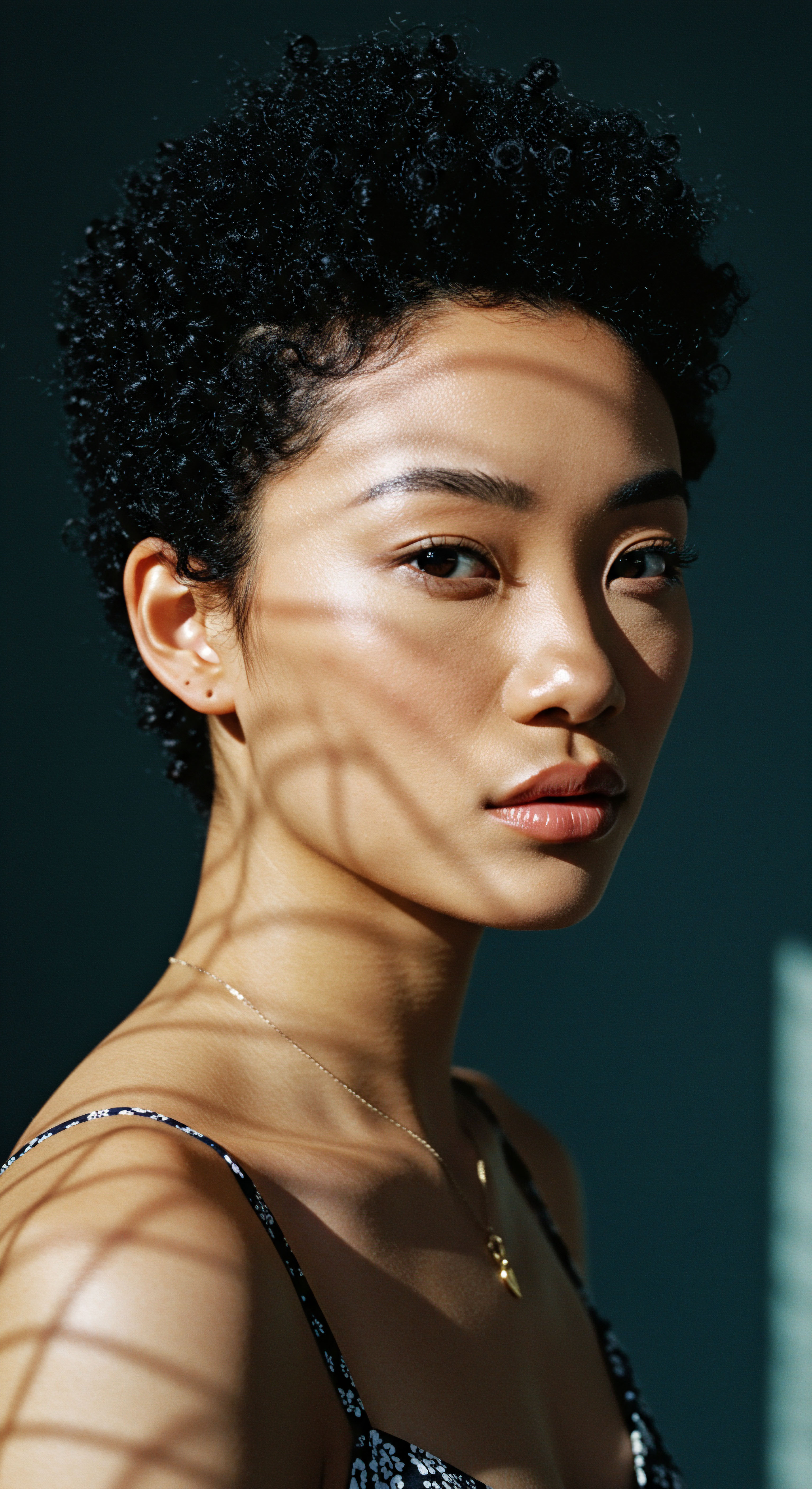
Beyond the Label ❉ Ingredients and Their Impact
A truly sustainable approach to textured hair care necessitates looking past marketing claims to understand the chemical composition of products. Many conventional hair products, historically formulated without the specific needs of Black hair in mind, contain ingredients that can strip natural oils, cause build-up, or even pose long-term health risks. Sustainable choices prioritize botanically derived ingredients, emollients, and humectants that work in harmony with the hair’s natural structure, promoting lasting moisture and elasticity.
This deeper look involves understanding ingredient functions and their potential consequences. For example, while some silicones offer immediate slip and shine, their non-biodegradable nature and potential for heavy build-up might contradict a long-term sustainability goal. Similarly, certain preservatives, though effective, can have wider ecological implications. An informed consumer seeks a balance between immediate hair benefits and broader ethical considerations.
Sustainable hair care is a dynamic process, shaped by informed choices and a commitment to personal well-being and collective responsibility.
| Ingredient Type Hydrators/Emollients |
| Examples Shea butter, Jojoba oil, Aloe Vera, Glycerin |
| Impact on Hair/Environment Nourishes hair, supports moisture, generally biodegradable. |
| Ingredient Type Surfactants (Gentle) |
| Examples Cocamidopropyl Betaine, Decyl Glucoside |
| Impact on Hair/Environment Cleanses without stripping, often plant-derived, better for waterways. |
| Ingredient Type Synthetic Fragrances |
| Examples "Parfum," "Fragrance" |
| Impact on Hair/Environment Potential allergens, often contain phthalates, non-biodegradable, linked to health concerns. |
| Ingredient Type Certain Preservatives |
| Examples Parabens (Methylparaben), Formaldehyde-releasers |
| Impact on Hair/Environment Linked to endocrine disruption and other health issues, environmental persistence. |
| Ingredient Type Non-Biodegradable Silicones |
| Examples Dimethicone, Cyclopentasiloxane |
| Impact on Hair/Environment Can cause build-up, difficult to rinse, environmental accumulation. |
| Ingredient Type Prioritizing natural, plant-derived ingredients and avoiding known irritants or environmental pollutants aligns with Black Hair Sustainability. |
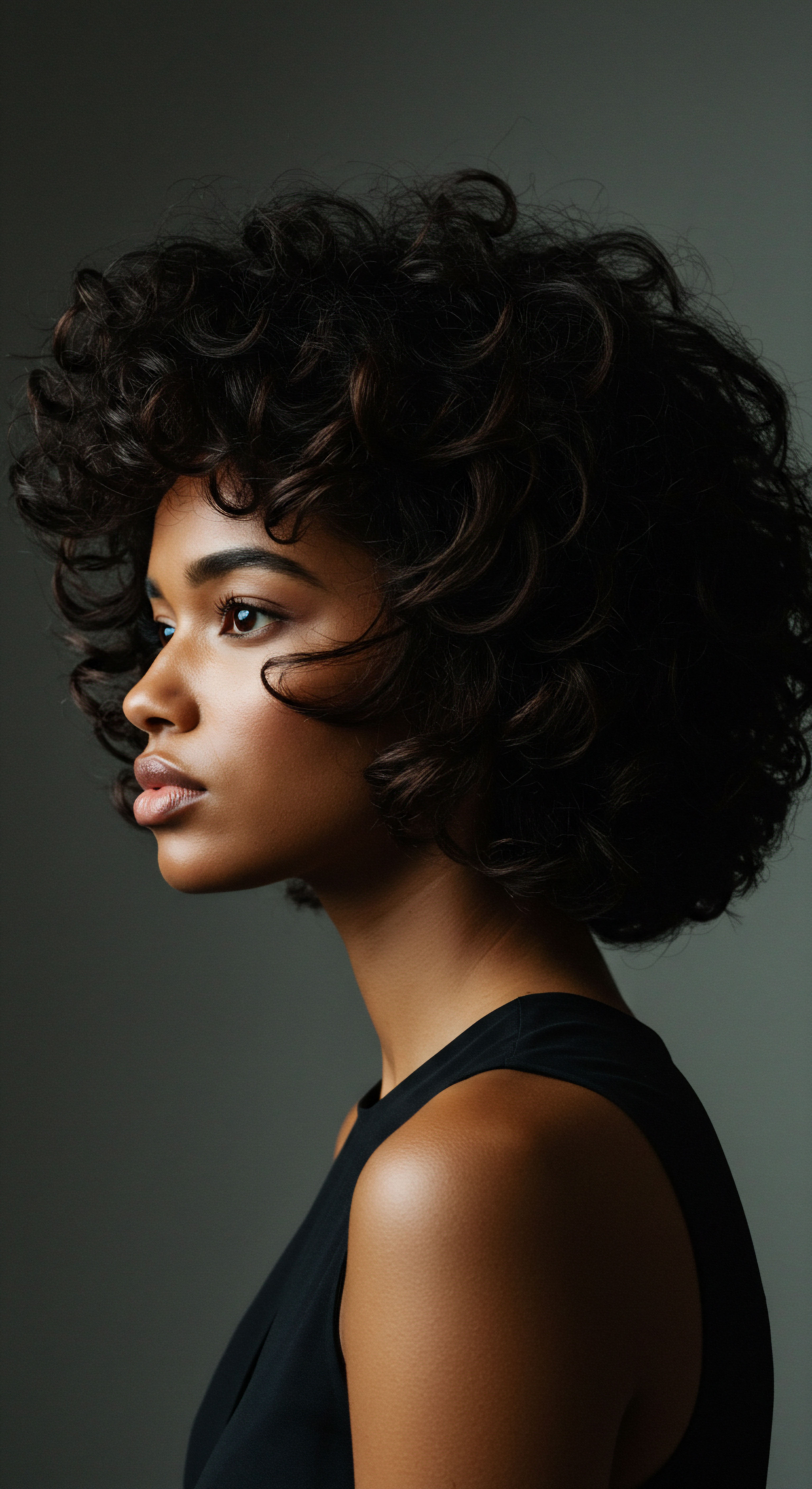
The Rhythm of Ritual ❉ Sustainable Practices
Integrating sustainability into daily and weekly hair care rituals moves beyond product selection to encompass mindful consumption and efficient resource use. This means optimizing wash days to conserve water, extending styles to reduce manipulation and product usage, and consciously repairing damaged strands rather than constantly cutting them away. The designation of sustainability here includes practices that promote the longevity of the hair itself.
For example, deep conditioning treatments, when applied effectively, can reduce the frequency of styling and heat application, thereby minimizing potential damage and energy consumption. Air drying, when suitable for one’s routine, lessens reliance on energy-intensive tools. Each intentional step contributes to a more sustainable hair journey, allowing hair to retain its strength and beauty over time.
- Water Conservation ❉ Turning off the faucet during shampooing and conditioning, opting for co-washing to extend time between full washes.
- Heat Reduction ❉ Limiting the use of blow dryers, flat irons, and curling wands, or using heat protectants when necessary.
- Product Longevity ❉ Maximizing the use of each product, understanding how much is truly needed to avoid waste.
- Tool Care ❉ Maintaining combs, brushes, and styling tools to extend their lifespan, reducing the need for frequent replacements.

Community and Commerce ❉ Supporting Sustainable Spaces
The significance of Black Hair Sustainability also extends to the economic and social ecosystems that support textured hair care. This involves recognizing and supporting Black-owned businesses, particularly salons, which often serve as vital community hubs and repositories of specialized knowledge. These establishments, when committed to sustainable practices, can become powerful agents of change, offering ethical products and services.
Many Black salon owners are at the forefront of implementing eco-friendly practices, from reducing water and energy consumption to responsibly disposing of chemical waste. Their efforts contribute to a circular economy within the beauty sector, providing not only employment but also a safe, informed space for clients. Supporting these enterprises means investing in a more equitable and environmentally sound future for textured hair care. This provides a tangible example of the interpretation of sustainability in a community context.

Advanced
The advanced definition of Black Hair Sustainability transcends superficial notions of “green” beauty, instead demanding a rigorous, multi-dimensional understanding that interrogates the intricate interplay of biological resilience, historical oppression, socio-economic structures, and environmental justice. This is a comprehensive explication, tailored for the expert mind, revealing the deep significance and profound implications of hair care within the textured hair experience. It is not merely about preserving hair; it is about reclaiming agency, fostering health equity, and dismantling systems that have historically undermined the well-being and cultural autonomy of Black individuals through their hair.
The interpretation of this concept at an advanced level necessitates a critical lens, one that recognizes the profound impact of racialized beauty standards and the disproportionate burdens placed upon Black communities. This designation involves understanding hair as a nexus where personal identity, public perception, and systemic inequalities converge, requiring a nuanced approach that addresses root causes, not just surface symptoms. It speaks to a future where the health of textured hair is not a compromise but an inherent right, secured through informed science, cultural reverence, and equitable policy.

The Chemistry of Care ❉ A Deeper Examination
From a scientific standpoint, the biological uniqueness of textured hair—its distinct curl patterns, protein structure, and lipid content—renders it particularly vulnerable to certain chemical and physical stressors. The inherent coiling of the hair shaft means that natural oils struggle to travel down the strand, leading to chronic dryness. Furthermore, the cuticle layers, which act as the hair’s protective shield, are often raised at the points of curvature, making textured hair more susceptible to damage from heat, friction, and harsh chemical treatments. Understanding these biological realities forms a critical component of sustainable hair care, informing product development and application methodologies.
An advanced understanding of hair sustainability requires delving into the molecular level of product formulations. The industry has historically overlooked the specific needs of textured hair, leading to a market saturated with products that, while seemingly effective in the short term, can cause long-term damage or expose users to harmful substances. This is where cosmetic chemistry meets social justice, demanding transparency and responsible innovation.
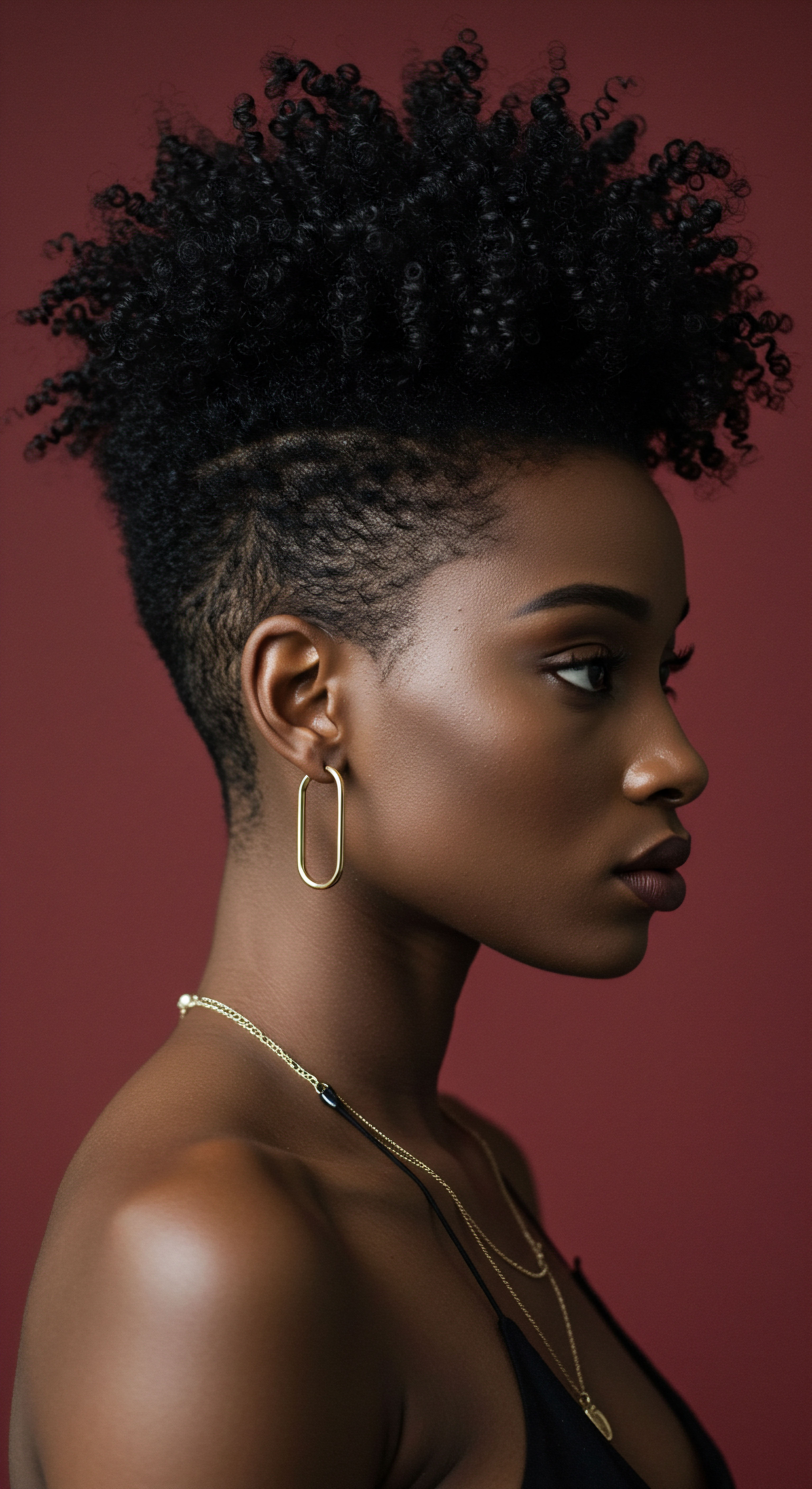
A Disquieting Truth ❉ The Environmental Injustice of Beauty
One of the most compelling and, indeed, unsettling aspects of Black Hair Sustainability lies in the disproportionate exposure of Black women to hazardous chemicals through hair products. Research has unequivocally demonstrated a troubling disparity. For instance, studies reveal that approximately 50% of Hair Products Marketed to Black Women Contain Endocrine-Disrupting Chemicals (EDCs), a Stark Contrast to the Mere 7% Found in Products Marketed to White Women. This statistic is not an isolated data point; it represents a systemic failing, an environmental injustice deeply embedded within the beauty industry.
Approximately 50% of hair products marketed to Black women contain endocrine-disrupting chemicals, compared to a mere 7% in products for white women.
These EDCs, which include compounds like phthalates, parabens, and formaldehyde-releasing preservatives, interfere with the body’s hormonal system. Their presence in products used frequently, often daily, by Black women has been linked to a higher prevalence of hormone-mediated health conditions, such as early puberty, uterine fibroids, preterm birth, obesity, diabetes, and increased risks of breast and uterine cancers. This reality underscores a critical dimension of Black Hair Sustainability ❉ it is inextricably linked to public health and racial equity. The pursuit of straightened hair, often driven by Eurocentric beauty standards and societal pressures for professional assimilation, has inadvertently placed Black women at a higher risk of exposure to these harmful substances.
The systemic nature of this issue extends to the very accessibility of safer alternatives. Research indicates that stores in predominantly Black, lower-income neighborhoods are more likely to stock higher-hazard hair products compared to more affluent, predominantly white areas. This spatial inequity means that even when individuals seek healthier options, they face significant barriers to access, further compounding the problem.
This is not simply a matter of individual consumer choice; it is a reflection of deeply entrenched market dynamics and regulatory oversights that demand urgent intervention. The delineation of this problem is crucial for a complete understanding of its scope.

Health Implications and Chemical Exposure
The health consequences stemming from chronic exposure to EDCs are multifaceted and long-lasting. For instance, the link between certain hair relaxers and an increased risk of uterine cancer for Black women who have used them frequently or for extended periods is a particularly concerning finding. These chemicals can alter cellular processes, leading to adverse reproductive and developmental outcomes. The full significance of this exposure extends beyond individual pathology, impacting family planning, quality of life, and contributing to broader health disparities.
The absence of robust regulation in the United States, compared to stricter chemical policies in regions like Europe, means that many cosmetic ingredients are sold without comprehensive safety testing. This regulatory vacuum places the burden of safety research and advocacy largely on consumer groups and public health organizations, rather than on the manufacturers profiting from these products. The challenge then becomes a collective responsibility to advocate for policy changes that prioritize public health over corporate interests.

Shaping Futures ❉ Policy, Innovation, and Collective Well-Being
Achieving Black Hair Sustainability at an advanced level necessitates a multi-pronged approach that encompasses legislative reform, scientific innovation, and cultural re-education. Policy interventions, such as the proposed ban on certain chemicals in hair straightening products by the FDA, represent crucial steps towards mitigating chemical exposure. However, true progress requires a more comprehensive overhaul of cosmetic regulations, mandating ingredient transparency and rigorous safety assessments for all products.
Innovation in product development must shift towards genuinely clean, high-performing formulations that cater specifically to the unique needs of textured hair without compromising health or environmental integrity. This involves investment in research and development that prioritizes non-toxic alternatives and sustainable manufacturing processes, from ingredient sourcing to packaging disposal. Life Cycle Assessments (LCAs) for cosmetic products, though still evolving for hair care, offer a framework for evaluating environmental impacts across a product’s entire journey, from raw material extraction to consumer use and end-of-life disposal. Applying such rigorous analysis to textured hair products can illuminate areas for significant improvement, fostering a more responsible industry.
The path forward also relies heavily on empowering communities through education and advocacy. Promoting awareness about harmful ingredients, supporting Black-owned businesses committed to clean beauty, and celebrating natural hair textures as expressions of beauty and strength are all vital components. This collective endeavor strengthens the resolve to challenge entrenched beauty norms and demand a marketplace that truly serves the health and heritage of all. The explication of these interconnected elements reveals the complexity of this ongoing pursuit.
- Legislative Advocacy ❉ Supporting policies that mandate ingredient transparency, restrict harmful chemicals, and ensure equitable access to safe products for all consumers.
- Scientific Research ❉ Funding and promoting studies that specifically investigate the long-term health impacts of hair products on textured hair, driving evidence-based policy and product innovation.
- Industry Accountability ❉ Pressuring manufacturers to adopt rigorous safety testing, invest in sustainable formulations, and commit to ethical sourcing and waste reduction practices.
- Cultural Reaffirmation ❉ Continuing to celebrate and de-stigmatize natural Black hair in all its forms, fostering self-acceptance and reducing the societal pressure to conform to potentially harmful beauty ideals.
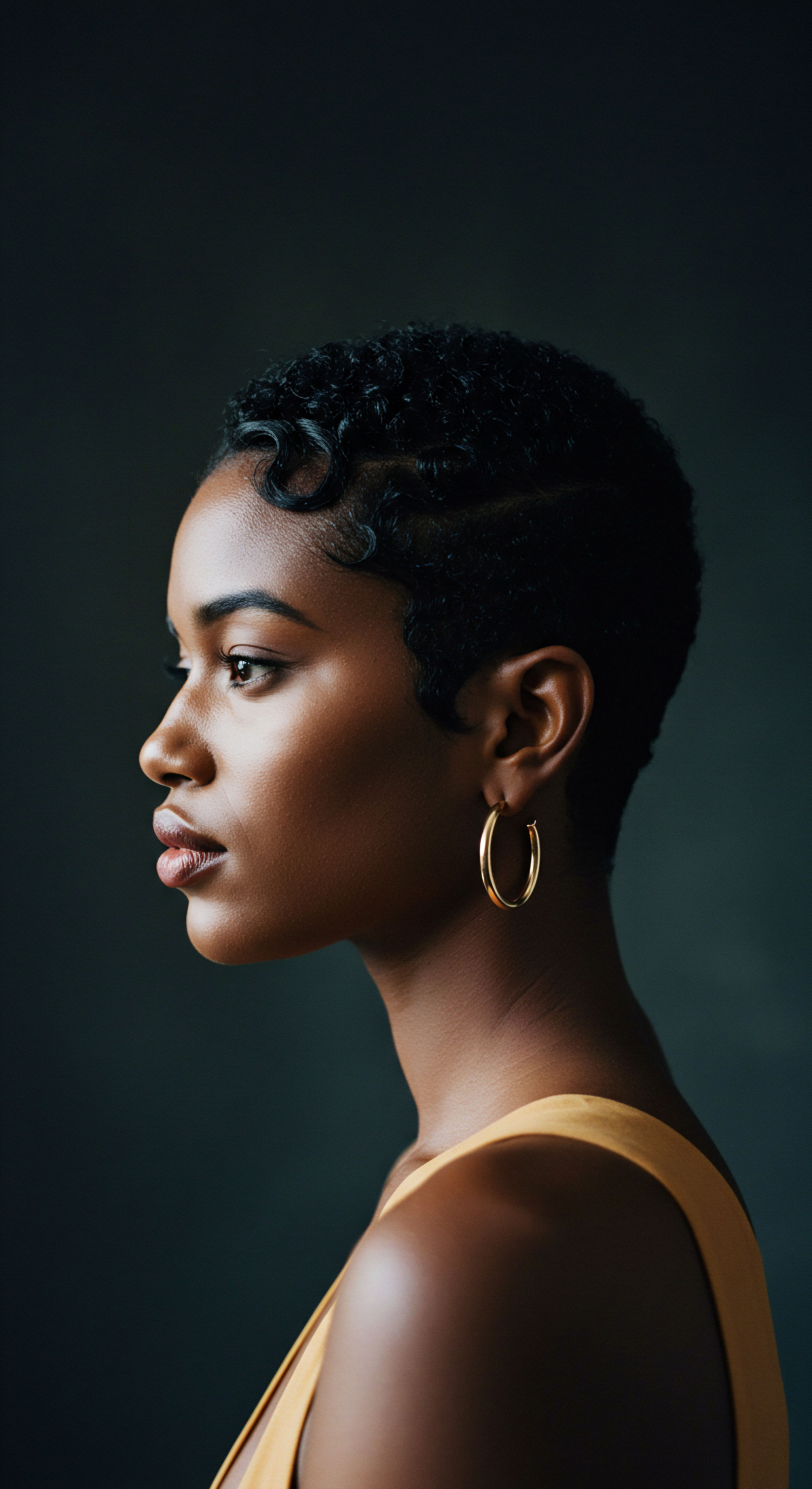
Reflection

Embracing the Journey ❉ A Future for Textured Hair
The unfolding of Black Hair Sustainability is a testament to resilience, a quiet revolution woven into each coil and strand. It is a profound declaration that our beauty, our health, and our planet are interconnected, demanding a mindful approach to every choice we make. As we move forward, the wisdom gleaned from ancestral practices, the precision offered by scientific understanding, and the compassionate advocacy for well-being guide our collective path.
This journey is not without its complexities, yet within each challenge lies an invitation to innovate, to educate, and to celebrate the vibrant legacy of Black hair. Our textured crowns stand as living archives, holding stories of strength and demanding a future where their vitality is cherished, sustained, and universally respected.
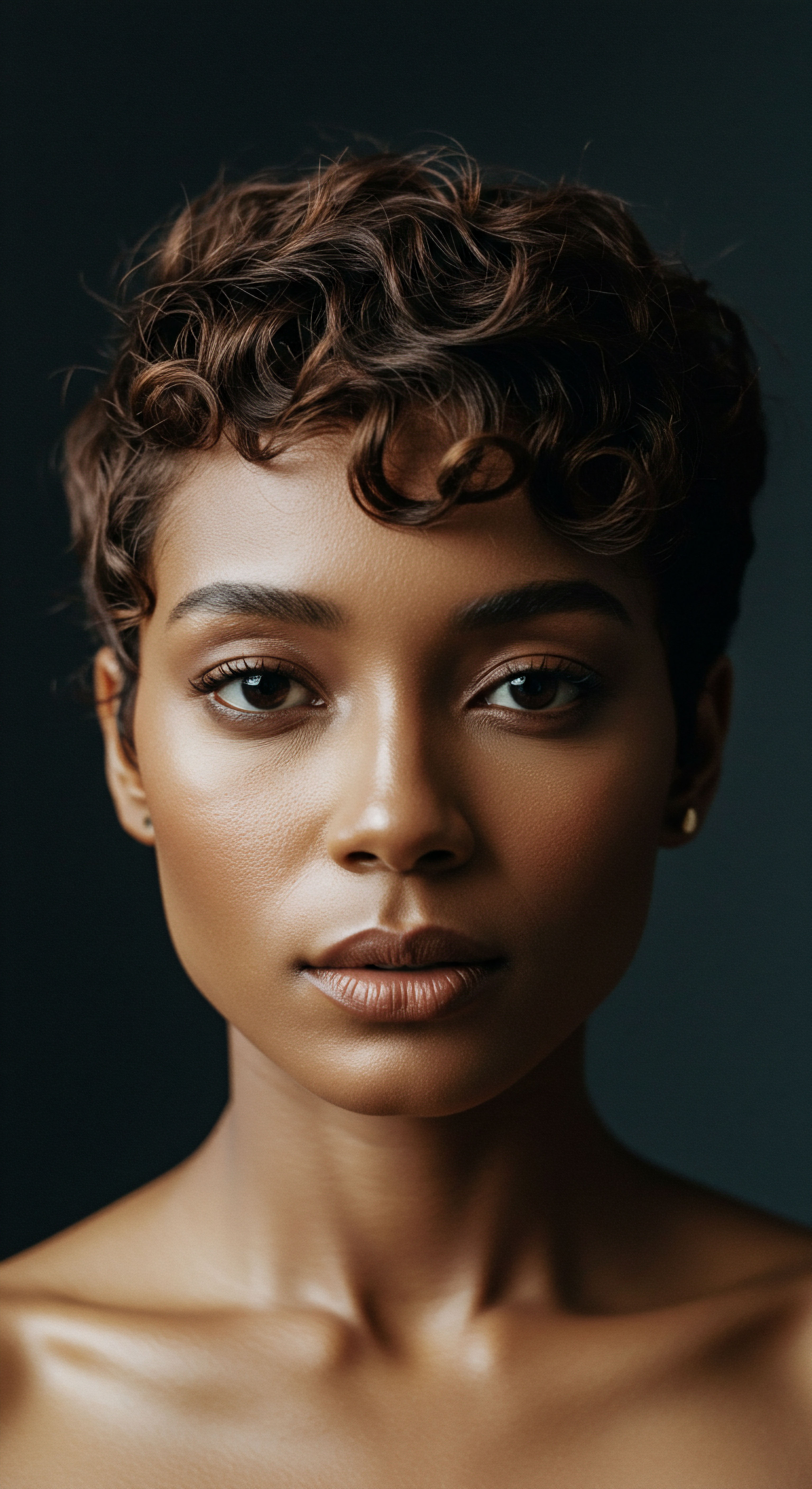
References
- James-Todd, T. et al. (2021). Hormonal activity in commonly used Black hair care products ❉ evaluating hormone disruption as a plausible contribution to health disparities. Environmental Health Perspectives, 129(5), 057004.
- James-Todd, T. (2023). Black Hair Care Products & Toxic Exposure. Living on Earth (Radio Interview Transcript).
- Environmental Working Group. (2025). Higher hazards persist in personal care products marketed to Black women, report reveals.
- The Institute. (2023). Toxic Chemicals in Black Hair Products, 6 Examples.
- Harvard T.H. Chan School of Public Health. (2020). Some Black hair products may harm users’ health.
- Clean Water Action. (2024). The Tea on Toxic Beauty ❉ Disproportionate Impacts of Toxic Chemicals in Beauty Products on Women of Color.
- Clean Water Action. (2024). Beauty Products and Environmental Justice ❉ Why Safer Alternatives Matter.
- Columbia University Mailman School of Public Health. (2025). Highlighting Racial and Economic Disparities in Personal Care Product Safety. Journal of Exposure Science & Environmental Epidemiology .
- The BlackTravelBox. (2023). Sulfates, Parabens, and Phthalates ❉ The Harmful Ingredients Hiding in Your Hair Products.
- Silent Spring Institute. (2018). Hair products for Black women contain mix of hazardous ingredients. Environmental Research .
- Black Women for Wellness. (2023). Copy of Black Hair Survey Report.
- The Bay State Banner. (2023). Study highlights harmful Black hair care products.
- Harvard T.H. Chan School of Public Health. (2024). Uncovering the dangers of hair products marketed to Black women, girls.
- Shamasunder, B. & Saskin, E. (2022). The Environmental Injustice of Beauty Products ❉ Toward Clean and Equitable Beauty. Environmental Health Perspectives, 130(1), 011301.
- Inside Climate News. (2023). The ‘Environmental Injustice of Beauty’ ❉ The Role That Pressure to Conform Plays In Use of Harmful Hair, Skin Products Among Women of Color.
- Sieber, R. & Herreman, F. (Eds.). (2000). Hair in African Art and Culture. Museum for African Art.
- Nyela, O. (2021). Braided Archives ❉ Black hair as a site of diasporic transindividuation. York University.
- Rosado, S. (2003). African-American Women and Hair ❉ Is It More Than Just Hair?. The University of New Mexico.
- Byrd, A. D. & Tharps, L. (2014). Hair Story ❉ Untangling the Roots of Black Hair in America. St. Martin’s Press.
- Johnson, T. A. & Bankhead, T. (2014). Examining the Experiences of Black Women with Natural Hair. Journal of Pan African Studies, 7(6), 159-173.
- Turner, E. (2016). African American Entrepreneurial Sustainability. Walden University.
- Mayr, S. et al. (2021). Small businesses, including African American small beauty salons, face unique challenges .
- Ndichu, M. & Upadhyaya, S. (2019). Hair Care Practices and Product Usage Among African Women in Kenya ❉ A Qualitative Study .
- Becker, J. et al. (2022). The importance of systematic implementation for business sustainability .
- Al-Hammami, S. A. et al. (2024). “Going natural” ❉ Black women’s identity project shifts in hair care practices. Journal of Consumer Culture .
- Essel, R. (2023). The SAGE Encyclopedia of African Cultural Heritage in North America ❉ Hairstyles, Traditional African. SAGE Publications.
- Akpan, N. (2021). Examining Afrocentricity and Identity Through the Reemergence and Expression of Natural Hair. University of South Florida.
- Abney, R. (2021). The Influence of Colorism on the Hair Experiences of African American Female Adolescents. Journal of Black Psychology, 47(5), 441-460.
- Penn State University. (2021). Black hairstyles will inspire innovative building materials in new research.
- Johnson, T. A. & Bankhead, T. (2014). Examining the Experiences of Black Women with Natural Hair. CUNY Academic Works .
- Harvey, K. D. (2005). Becoming Entrepreneurs ❉ Intersections of Race, Class, and Gender at the Black Beauty Salon. University of Michigan.
- SciELO. (2019). Black entrepreneurship and ethnic beauty salons ❉ possibilities for resistance in the social (re)construction of black identity.
- Brandeis University. (2016). Survey of Indoor Air Quality in Black Women’s Hair Salons in Boston.
- JSTOR Daily. (2019). How Natural Black Hair at Work Became a Civil Rights Issue.
- Scrummi. (2021). The Importance of Environmental Sustainability in Hairdressing Salons.
- Coogan, P. F. et al. (2018). Chemical/Straightening and Other Hair Product Usage during Childhood, Adolescence, and Adulthood among African-American Women ❉ Potential Implications for Health. Environmental Health Perspectives, 126(9), 097004.
- Stefanakis, M. (2024). Life Cycle Assessment (LCA) of the Impact on the Environment of a Cosmetic Cream with Gold Nanoparticles and Hydroxylated Fullerene Ingredients. Cosmetics, 11(24), 11625.
- Coderch, L. et al. (2023). Porosity and Resistance of Textured Hair ❉ Assessing Chemical and Physical Damage Under Consumer-Relevant Conditions. Cosmetics, 10(4), 98.
- Vynokurova, O. (2024). Cosmetic brands sustainability reports and LCA calculations ❉ the very best practices.
- Stefanakis, M. (2024). Life Cycle Assessment (LCA) of the Impact on the Environment of a Cosmetic Cream with Gold Nanoparticles and Hydroxylated Fullerene Ingredients. MDPI .